|
In our previous article Construction Equipment Productivity we discussed how we can improve the productivity of construction equipment on our construction projects. We talked about selecting the right size machines, the importance of using skilled operators, balancing equipment that is working in teams and how one item can drag down the productivity of the other equipment working in the team, and then we discussed how faulty and old equipment can disrupt the project and impact productivity. In this article we discuss other ways to improve construction equipment productivity. Positioning Construction EquipmentThe loading times of the excavator is also impacted by the hardness of the ground. Soft ground is easily scooped up, while hard ground takes additional effort. A more powerful excavator will dig harder ground quicker. The position of the excavator relative to where it scoops the ground and to where it dumps it on the truck will impact the loading time. Every time the excavator must rotate from the scoop location to the load location involves time. The most efficient loading position is where the excavator can scoop ground and tip it straight into the truck. When the truck is parked behind the excavator then the excavator must continuously rotate through 180 degrees from the scoop to load position. Carefully consider where trucks will stand when they’re loaded, and how easily they can move in and out of that position. Correctly positioning the truck and planning the excavation operation could easily cut one or two minutes off every loading cycle, which could increase efficiencies by 20%, possibly even meaning the operation can be done with one less truck. Just think how much money can be saved in a day with one less truck. Servicing and Refuelling EquipmentAnother problem occurs when equipment has to be refuelled or serviced. Refuelling or servicing an excavator in the middle of a shift means that the machine must be stopped. Again this means that all the equipment working with the excavator stops. So 15 minutes stopping the excavator is usually 15 minutes when the other equipment doesn’t work. Servicing and refuelling key equipment, like excavators, after hours may result in additional cost for the service team, but it could result in better productivity. Just consider, I said in the previous article Construction Equipment Productivity that equipment might only work 7 hours in a day. So losing 15 minutes reduces productivity by another 4%. Other FactorsCompacting ground/soil requires water. If there’s insufficient water then the compaction will happen slower and all the equipment will operate less efficiently. We had a project where the client had to supply the water, but they couldn’t supply the required quantities and nor was the water available at the location specified in the contract. This not only reduced the productivity of our equipment, but it also delayed the project resulting in us lodging a claim for millions of dollars against our client. CranesBut, it’s not just about the productivity of earthmoving equipment. It includes planning the size of cranes, deciding the best position for the crane, carefully thinking how the crane will pick up materials and where they’ll be placed in position. Again using skilled operators will make the operations safer and faster. Cranes have their lifting cables running through reeve blocks. This allows the crane to lift a heavier load. If the lifting cable passes twice through the lifting block the crane cable is in effect doubled and can lift double the load of a single cable. The problem is that the crane cable must travel double the distance when lifting the load than if it was a single cable, so it slows the lifting operation, which is not normally a problem when lifting a heavy load. Sometimes the crane lifting cable passes through the lifting reeve blocks several times and there’s 4 or 6 lifting lines connecting the crane hook to the crane. This is required when lifting heavy loads and it’s essential when loads must be precisely fitted into position and slow manoeuvring is required. But, it slows the lifting of repetitive and light items. Changing the number of reeves or lifting loops connecting the crane to the lifting hook can dramatically increase the speed the crane lifts objects – of course this should be done with the permission of the crane operator or an expert that understands the lifting capacity of the crane’s lifting cable and it will have to be changed back for heavy loads. Good Planning and InstructionsOften moving equipment from one location and setting it up in another location is time consuming and results in zero production in that time. Planning these moves so that they happen quickly will improve productivity. So always ensure that the work areas are ready and clear of obstructions ahead of the time. Give operators clear instructions as to what must be done and the best position for the equipment to maximise productivity. Improving Productivity of Construction EquipmentEquipment used badly can be dangerous and expensive, but the right item used by a good operator makes construction easy and efficient. Often construction equipment on projects is unproductive, machines stand idle and equipment is not used efficiently. Equipment costs can make up a large portion of the costs on a construction project - particularly earthmoving and road projects where equipment costs could account for 30 to 50% of the costs. So even improving productivity by 5% could add an extra 2.5% of profits. But improved equipment productivity brings other benefits, such as operators are more productive, less fuel is consumed by the machines, the project can be completed sooner, and other operations become more efficient and productive. It is worth spending the time to analyse how the construction equipment is being used on your construction equipment. See how productivity can be improved. Often it takes only a few small adjustments to make significant improvements. Other Useful articles: Construction productivity How to improve construction productivity Is your construction project losing money? Do you want to find out why? 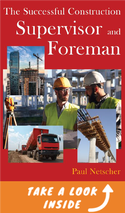 This article is an extract from the book 'The Successful Construction Supervisor and Foreman'. Do you want to learn how to manage construction projects successfullyPaul Netscher has written several easy to read books for owners, contractors, construction managers, construction supervisors and foremen. They cover all aspects of construction management and are filled with tips and insights.
Visit to read more. The books are available in paper and ebook from most online stores including Amazon. © 2021 This article is not to be reproduced for commercial purposes without written permission from the author. construction management construction project management
13 Comments
12/3/2021 09:59:16 am
You made a good point when you shared that it is important to consider where the crane will lift and place the heavy items that are being used in the construction. This will ensure that everything will be managed smoothly without causing any delays for the project. I would like to think if a company is working on a construction project, it should consider getting a crane from a reliable rental service and make sure to plan how to use it wisely.
Reply
19/3/2021 07:10:45 am
I didn't know that by having their cables go through reeve blocks, cranes can lift heavier loads. I want to find one that can lift well over two-thousand pounds. Maybe that means I need one with stronger cables and probably bigger reeve blocks.
Reply
Paul Netscher
19/3/2021 11:03:25 am
Hello Chris, it's important to note that more cable loops through reeve blocks does not increase the crane's lifting capacity. More loops are needed to increase the lifting capacity of the rope. More loops also means loads are lifted and lowered more slowly, which increases the precision to slowly lower loads into position.
Reply
26/4/2021 02:00:31 am
I do appreciate that this post mentioned that when choosing skid steer rental service, it is important for us to consider their maintenance schedule. It makes sense as in doing so, we can be certain that the equipment is well-maintained. Assuming that I would like to rent the equipment, I will definitely remember to be mindful of their maintenance.
Reply
5/5/2021 04:44:15 am
I can see how a business could really benefit from getting the right kind of equipment in order to have the group excavated safely. Making sure that they can get some help from a professional could allow them to be more effective. It was interesting to learn about how the equipment can have the right kind of machine in order to have better productivity, and work a lot better.
Reply
22/6/2021 11:15:20 pm
I can see how planning where to place a crane and how to pick up the material could be difficult. That's why I would only hire one if comes with a professional driver. There is no way I would try to control one of those things on my own.
Reply
9/7/2021 04:52:13 am
I can see how a business could really benefit from getting the right kind of crane for their construction site in order to lift all of the materials. Making sure that they can be moved by a professional could allow them to be more effective with the right kind of equipment. It was interesting to learn about how they can have safer, and faster operations when the operators are skilled, and understand how the crane works.
Reply
1/10/2021 09:37:22 pm
Many people need this enlightenment. Construction company is not just a business but a partner to help you keep your home safe and beautiful. Thanks!
Reply
5/10/2021 12:24:46 am
A very detailed article, it is important to have a careful site layout planning in order to increase productivity. This is why roof contractors need to study the location first. This will also lead them to choosing the right size of tools and equipment. Thank you.
Reply
27/1/2022 07:54:26 am
Thank you for your article explaining the different aspects of productivity in remarks to construction equipment, Paul. It is interesting to me that improving the productivity of construction equipment can promote a quick completion of your projects. I'd think that a great way to improve the productivity of your equipment is to invest in attachments that will make it more effective and efficient.
Reply
29/4/2022 05:30:38 pm
It captivated me the most when you mentioned that planning the moving of equipment from one place to another can improve productivity. My friend mentioned that they need a crane for their next project. I think they should partner with a crane service that also offers repair services.
Reply
23/3/2023 07:13:01 am
I like the tip you gave that a proper location of the excavator would help provide more efficient production time for your construction project. My father told me last night that they are intending to build a commercial project on their vacant lot. He asked if I had any suggestions for the best way to choose an earthworks service for efficient project development. Thanks to this enlightening article, I'll advise him that speaking with a reputable earthmoving service can assist them in drafting the appropriate agreement.
Reply
22/9/2023 08:07:50 pm
The information you've shared about enhancing construction equipment productivity is not only valuable but also incredibly relevant in today's fast-paced industry. It's clear that efficiency and productivity are paramount in construction, and your blog does an excellent job of addressing these key concerns.
Reply
Leave a Reply. |
Archives
June 2024
Note: We welcome genuine comments, especially comments that add additional information to the subject matter in the article. We however reserve the right to remove inappropriate comments, which includes comments that have nothing to do with the subject, comments that include inappropriate language, and comments that are an advertisement for a product or company, or which include an advertising link. Comments must be in English. We will not enter into discussion on why a particular comment was removed.
CategoriesCopyright 2016 - The attached articles cannot be reproduced for commercial purposes without the consent of the author.
The opinions expressed in the attached articles are those of the writer. It should be noted that projects are varied and different laws and restrictions apply which depend on the location of the contractor and the project. It's important that the reader uses the supplied information taking cognisance of their particular circumstances. The writer assumes no responsibility or liability for any loss of any kind arising from the reader using the information or advice contained herein. "I have what I consider some of the best books on construction management."
Books are available from: Amazon.com Amazon.co.uk takealot.com kalahari.com Amazon.in Amazon.de Amazon.fr Amazon.it Amazon.com.au Powell's Fishpond uread bokus Amazon.ca Amazon.es Other retail stores Available in paperback or on Kindle "28 YEARS OF CONSTRUCTION PROJECT MANAGEMENT EXPERIENCE, DEVELOPING SUCCESSFUL CONSTRUCTION PROJECT MANAGERS AND BUILDING SUCCESSFUL CONSTRUCTION COMPANIES"
|
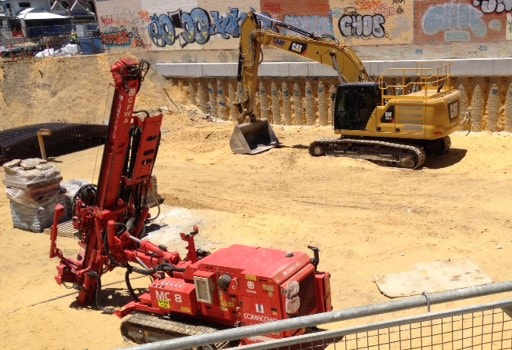
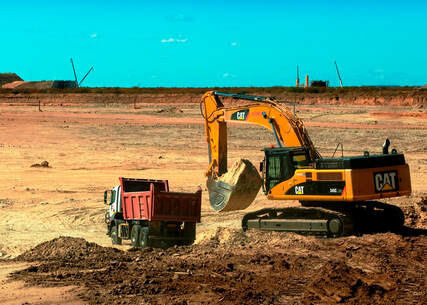

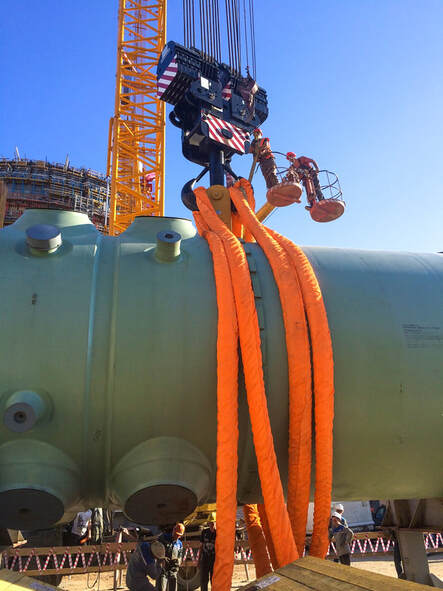

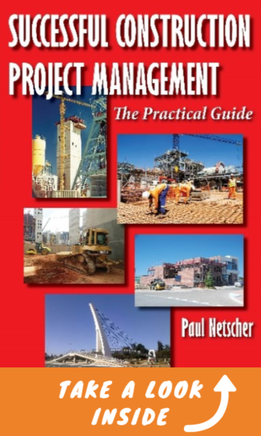


 RSS Feed
RSS Feed




